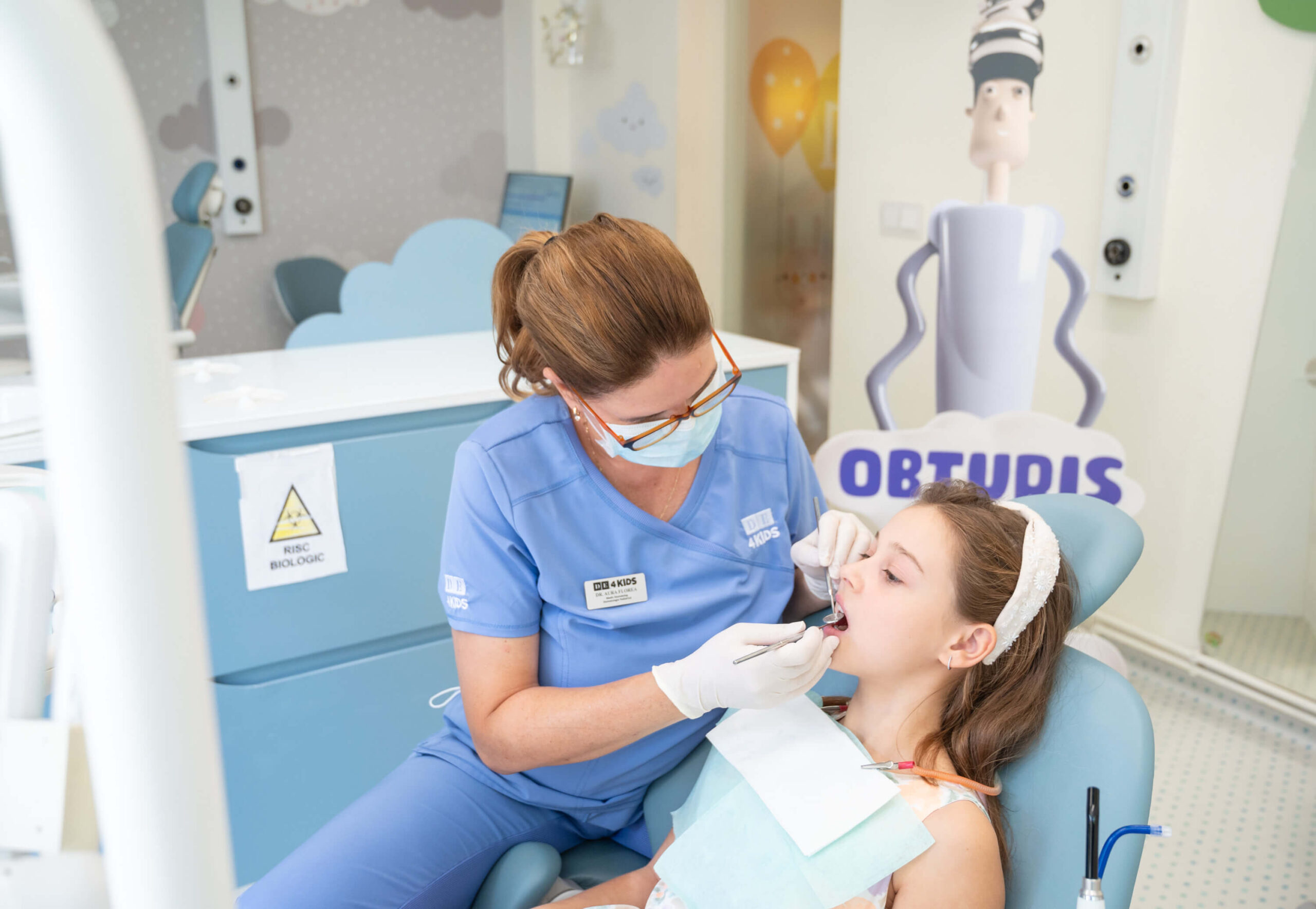
Demineralization of children's teeth

Children’s dental health starts with the appearance of the first tooth and plays a crucial role in their harmonious development. One of the first signs that dental enamel is affected is the appearance of dental demineralization – a common issue among children, but one that can be effectively prevented and treated.

What is dental demineralization and how can we recognize it?
Demineralization is the gradual loss of minerals from the structure of the dental enamel, making teeth more vulnerable to cavities. It appears as whitish, yellowish, or even brownish spots on the surface of the teeth—signs that the enamel is weakening. If left untreated, this issue can lead to cavities, increased sensitivity, and even discomfort during chewing.
Why does demineralization occur in children?
Children are more prone to demineralization due to several factors, such as:
- A diet high in sugar and acidic foods – Frequent consumption of juices, sweets, and processed foods encourages acid attacks on the enamel.
- Inadequate oral hygiene – Improper or infrequent brushing allows plaque buildup, which damages the teeth’s structure.
- Deficiencies in calcium and fluoride – These minerals are essential for developing and maintaining healthy enamel.
- Reduced saliva production – Saliva plays a protective role by neutralizing acids in the mouth and helping naturally remineralize enamel.

How can we prevent tooth demineralization in children?
Prevention is key to maintaining a strong and healthy smile. At DENT ESTET 4 KIDS, we recommend the following effective measures:
- Proper and regular tooth brushing – Children should brush their teeth at least twice a day using age-appropriate fluoride toothpaste.
- Balanced diet – Reducing sugar intake and replacing it with foods rich in calcium and phosphorus (milk, cheese, leafy greens) helps strengthen enamel.
- Dental sealants – An effective preventive method that protects teeth from cavities and reduces the risk of demineralization.
- Regular dental check-ups – According to the American Academy of Pediatric Dentistry, routine visits to the pediatric dentist are essential for early detection of dental issues and proper treatment.
Treatment of dental demineralization in children
If demineralization is already visible, it’s important to act quickly to prevent cavities. At DENT ESTET 4 KIDS, doctors use advanced technologies and treatments tailored to each child’s needs, such as:
- Professional fluoride treatments – Application of fluoride gel or varnish to strengthen enamel and protect against cavities.
- Remineralization therapy – Use of special gels rich in calcium and phosphate to help restore dental enamel.
- Close monitoring and dental education – The pediatric dentist will offer personalized recommendations to parents and children for proper oral care.
When is a dental check-up necessary?
If you notice white or yellow spots on your child’s teeth, if they complain of sensitivity to cold or sweet foods, or if they have difficulty chewing, we recommend scheduling a dental consultation. Early detection of dental demineralization can prevent complications and ensure simple, effective treatment.






 The role of nutrition in preventing cavities in baby teeth
The role of nutrition in preventing cavities in baby teeth 